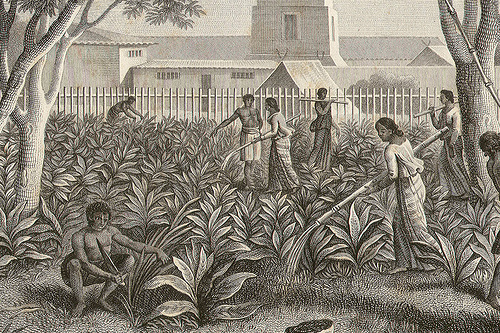Exploring the climate of the Southern Colonies reveals a tapestry woven from unique weather patterns, geographical nuances, and historical significance. This region, comprising present-day Maryland, Virginia, North Carolina, South Carolina, and Georgia, exhibits a climate differentiated by temperate zones, attendant to the subtropical conditions found predominantly in the lower southern areas.
The Southern Colonies enjoy a humid subtropical climate, characterized by hot summers and mild winters. This climatic framework influences not only the daily lives of the inhabitants but also the agricultural practices that flourished during the colonial era. In fact, the climate of the Southern Colonies played a pivotal role in crafting the economic backbone of the region—agriculture.
Summers are notoriously sweltering, with average temperatures often soaring above 90 degrees Fahrenheit. This oppressive heat typically begins in late May and persists through early September. However, the high temperatures are frequently alleviated by thunderstorms that roll through the region, providing brief but welcomed respite from the heat. These storms are more than just summer inconveniences; they are a crucial component of the hydrological cycle, replenishing the soil and supporting the agriculture that defined colonial life.
Within this climatic framework, the region’s fertile soil, known as the “tidewater” soil, became a canvass for the cultivation of cash crops. Tobacco, rice, and indigo became the emblematic harvests of the Southern Colonies, underpinned by the relentless sun and ample rainfall—averaging around 40 to 60 inches per year. The incorporation of these crops set a trajectory toward economic prosperity, fundamentally altering the course of colonial aspirations and lifestyles.
Winter presents a stark contrast to the hot summers. The temperatures typically hover around 40 degrees Fahrenheit, seldom dropping to freezing levels. Such mild winters create an environment conducive to year-round agricultural activities, which was a significant advantage over the Northern Colonies. The ability to harvest crops for a longer duration made the Southern Colonies an agrarian haven.
Geographical features further accentuate the diversity of the Southern Colonies’ climate. From the rolling hills of Virginia to the coastal plains of South Carolina and the marshes of Georgia, each locale contributes specific microclimates. Coastal areas are often subjected to the moderating influence of the Atlantic Ocean, which modifies temperature extremes and brings about variable weather patterns.
The impact of climatic variability has not only echoed through colonial history but also continues to resonate today. The natural resilience exhibited by the region’s flora and fauna is a testament to centuries of adaptation to climatic conditions. The majestic longleaf pine and the resplendent cypress swamps showcase the biodiversity inherent to the Southern Colonies. The interplay of saltwater and freshwater in the coastal estuaries further supports a rich tapestry of life, from migratory birds to aquatic species that thrive in brackish waters.
However, delving deeper into the historical context surrounding the Southern Colonies’ climate uncovers complexities. Weather extremes, such as hurricanes, have also shaped the course of life in these colonies. The unpredictability of severe weather events has served as a double-edged sword—while they can decimate a year’s harvest, they have also necessitated communal fortitude and resilience among the inhabitants.
Furthermore, the climatic conditions of the Southern Colonies played a critical role in shaping social and political dynamics. The reliance on slave labor for cultivating cash crops created a societal structure dependent on the weather’s whims. Droughts that stymied crop yields could incite social unrest, while bountiful harvests tantalized hopes for prosperity and growth. The interplay between climate, economy, and society was ever-present, influencing colonial legislations and relationships.
In terms of climate trends over the centuries, historical records indicate fluctuations that prompted responses from the inhabitants. Periods of notable heat in the late 17th century, for example, aligned with increased agricultural output but later gave way to colder periods that jeopardized harvests. These climatic oscillations fostered a culture of adaptability among the settlers as they navigated the uncertainties imposed by Mother Nature.
As we transition towards modernity, the Southern Colonies face contemporary challenges influenced by climate change. Rising temperatures, intensified storms, and shifting precipitation patterns pose threats not just to agriculture but to the very fabric of life established over centuries. These developments beckon a renewed understanding of the historical climate dynamics and call for an innovative approach to adaptation and resilience.
In conclusion, the climate of the Southern Colonies is not merely a background setting but a significant actor in the narrative of history. From fostering economic prosperity shaped by agriculture to influencing social structures heavily reliant on weather patterns, the climate has profoundly affected life in these colonies. Understanding the historical weather overview of the Southern Colonies invites a shift in perspective—a recognition of how deeply interconnected our existence is with the environment that nurtures us and a call to champion sustainable stewardship in the face of an uncertain climatic future.







